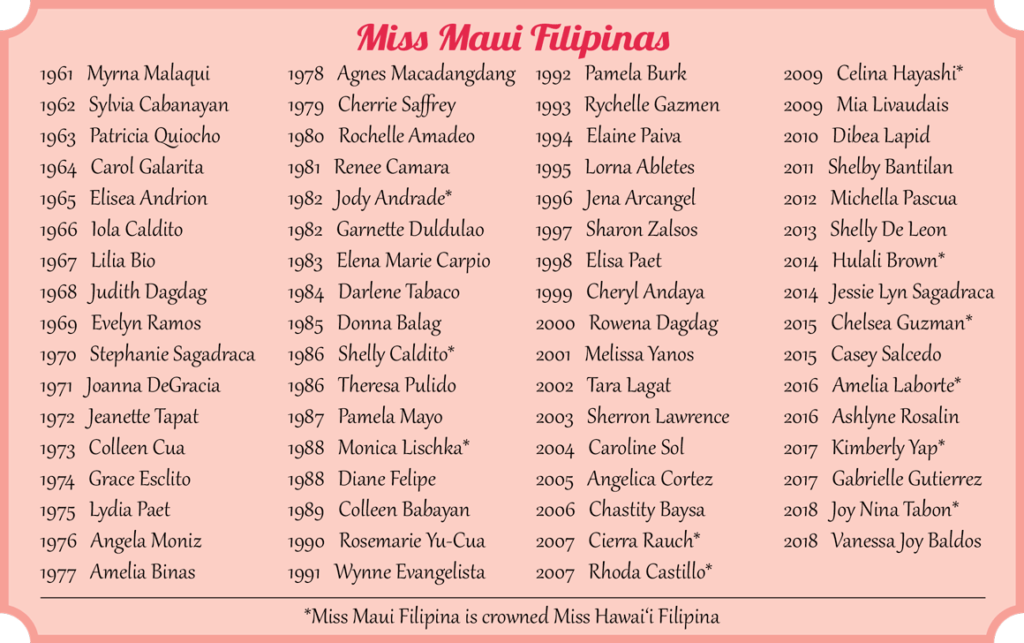Celebrating Talent, Beauty and Scholarship … The Miss Maui Filipina Scholarship Pageant
“And the Miss Maui Filipina is … ”
To date, almost seventy females on Maui have worn the crown of Miss Maui Filipina. (See list on page 13.) And one more will be added to that list on June 29 when the Maui Filipino Community Council hosts the 2019 Miss Maui Filipina Scholarship Pageant at the Maui Beach Hotel. (Admission is $40 (no dinner) and the Pageant will begin promptly at 7 p.m.) Three contestants are vying to succeed Miss Maui Filipina 2018–2019 Vanessa Joy Baldos: Mary Grace Basig, Amber-Lee Lana and Mary Eileen Varquez. During Baldos’ reign, she held a school supply fund raising drive for schoolchildren in the Philippines. (See Baldos’ story—right.)

Basig, 26 years old, is a graduate of the University of Hawai‘i at Manoa with a Bachelor of Arts in Philippine Language and Literature with a focus in the Ilokano dialect. Her parents are Reynaldo Valenti Taroma and Divina Gracia Basig Taroma. Basig traces her roots in the Philippines to Batac City and Paoay, Ilocos Norte. Her favorite quote is “If you want light to come into your life, you need to stand where it is shining.”

Lana, 19 years old, is a graduate of the IBS School of Cosmetology and Massage, with a degree in Cosmetology and Massage. Her parents are Jayson and Jennifer Bayudan. Lana traces her roots in the Philippines to Marcos, Ilocos Norte and Pangasinan. Her favorite quote is “Focus on the positive.”
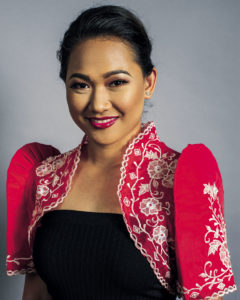
Varquez, 23 years old, is a graduate of University of Hawai‘i Maui College, with a degree in Accounting and Business Administration. Her parents are Wilson Pineda and Rita Varquez Pineda. Varquez traces her roots in the Philippines to Sarrat, Ilocos Norte and Davao City. Her favorite quote is “All you need is faith, trust and a little pixie dust.”

Image courtesy Maui Filipino Community Council
Several past Miss Maui Filipinas offered their advice to the three contestants. “My advice to this year’s pageant contestants is to approach it as a challenge with yourself,” said Rochelle Amadeo, Miss Maui Filipina 1980. “What is it about yourself you want to change, improve, share or how can you be a blessing to others with this opportunity? It is not about competing with the other contestants. It is a competition with yourself. If you can understand that, no matter what happens you will always come out ahead with or without a crown on your head.”
The thought the pageant was not about winning the crown was also echoed by Miss Maui Filipina 2000 Rowena Dagdag. “Be VERY OPEN to constructive criticism and use the feedback you receive from the coaches to improve your skills. The ultimate goal in this or any pageant isn’t the title or the crown. You are given an opportunity to refine your skills in interviewing, public speaking, presentation, time management, relationship building, and developing poise and confidence. These skills are important in life and will help you be successful in the future.”

Agnes Macadangdang, Miss Maui Filipina 1978 thanks the contestants for stepping forward. “To the contestants, I thank you for being involved and having the courage to participate. To put yourself out there is by no means an easy thing to do! Enjoy the journey and have fun with the experience! You will undoubtedly experience tremendous personal growth and will learn so much from this experience. More important, take this time to understand and learn about your Filipino heritage as much as you can. How did your Filipino ancestors form your personal foundation, how does it personally impact your present life and how will you perpetuate it for future generations? We have a beautiful culture, one that you can be proud of. Take this unique opportunity to immerse yourself in it wholeheartedly! As a Filipina, know your past, incorporate it in your present and engage in leaving a worthy legacy for our future generations. Here in Hawai‘i, the grit, steadfastness and perseverance of our Sakada ancestors are the cornerstones of our Filipino community. Our accomplishments pale to what they have overcome. We would not be where we are today if not for them. We have come a long way and have a bright, promising future ahead of us as we continue to strive together. Dios ti agngina, thank you 2019 Miss Maui Filipina contestants for doing your part in serving our community!”

The Miss Maui Filipina pageant was first held in 1961 at the Wailuku Armory with Myrna Malaqui crowned as the Miss Maui Filipina. Initially the pageant was based on popularity, i.e., the amount of funds the candidate raised for the scholarship program.
Judith Dagdag, Miss Maui Filipina 1968 recalls Mrs. Alice Ragasa going to their house to ask her parents permission for her to run. “I was eighteen years old at that time. My parents decided that I should run. There were two of us—me and Amanda Bio. It was held at the Haole Club House in Pu‘unēnē. In those days, the winner was determined by the amount of scholarship funds raised. I don’t remember how much I raised. I don’t know how we were judged. That was a long time ago. But I had to wear a terno and I also danced Salakot.”

Image courtesy Maui Filipino Community Council
In 1970, the pageant was given a new format that included different phases of competition. “Nancy Andres and I went to the Miss Hawai‘i Filipina contest and we got their criteria and decided to upgrade our Maui queen contest,” said Agrifina “Aggie” Cabebe. “We started with three phases: the Kimona Formal Phase; the Talent Phase; and the Terno Phase and Oral Questioning.”
The year 1970 was a critical year for the Maui Filipino Community Council. It was the first year of the Council’s Fiesta Filipina, with events spanning from May 1 through July 11, 1970, including an Introduction of the Queen contestants on May 1 with a motorcade from Wells Park to the Kahului Shopping Center; a Santa Cruzan Festival on May 29 at the Kahului Shopping Center; the first annual Barrio Fiesta on May 31, and the Queen Contest and Coronation on June 6 at the Baldwin auditorium. The pageant even published a souvenir program (24 pages).
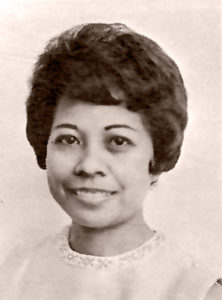
Andres was the Fiesta Filipina co-chairperson, together with Fred Duldulao while Shirley Evangelista and Artemio Baxa were co-chairpersons of the Queen contest. Cabebe and Duldulao would co-chair the Queen contest in 1971. “When Nancy became president in 1972, I looked for a person to assist with the queen contest and found Pauline Agres,” said Cabebe. “Together, the three of us would be called The Three Musketeers.”
Cabebe had a lot of respect for Andres and developed a close working relationship with her. “The first time I met Nancy was when she came to Maui in 1964 to perform as part of the Saniatan ti Amianan. That’s why I named my Folk Dance troupe The Maui Saniatas in the late 1960’s,” Cabebe recalls. “I got my nickname ‘General’ because I served as the General Chairperson of the Filipino Fiesta for many years, beginning in 1972 when Nancy became president of the Maui Filipino Community Council.”

The pageant underwent a few more changes over the years. In 1973, the Bathing Suit Phase was added and in 1976, the Terno Phase and Oral Questioning was renamed to Formal Gown Appearance and Interview. Later, the Pre-Pageant Interview Phase was added.
And in 1976, a trip to the Philippines was offered as a prize. “I was the first chaperone,” said Cabebe. “Nobody wanted to go. They were scared. I had family in Manila so I wasn’t scared.”
The trip was an absolute success. In her message printed in the 1977 souvenir booklet, Miss Maui Filipina 1976 Angela Moniz wrote “It is difficult to express all the significant impressions woven into my being but what made this trip even more beautiful were the people I had the opportnity to meet. Wherever we went, warm and sincere smiles greeted us. I will never forget the many friends that I have made both abroad and in our community. I have gained a deeper understanding of myself in respect to my cultural heritage and with its understanding arises a genuine appreciation for all that I have received. In our fast moving everchanging world, the reflection of our Filipino culture should be maintained as a significant and valuable aspect of our lives.”

For Sharon Zalsos, Miss Maui Filipina 1997, the promise of a trip was what made her participate. “My mother back then, had a great deal of influence on me and she made me run. So even though I was too shy to participate in the scholarship pageant, she convinced me to join and possibly win a trip to the Philippines. ‘You can see Lola Cisay again,’ she said. That sealed the deal for me. The pageant was in 1997 and we had just immigrated to Hawai‘i in 1992. I was missing the Philippines and a free trip sounded very appealing.”
Amadeo explains the trip was just part of the highlight of her reign. “Well like everyone else I would say the trip to the Philippines for sure! But looking back, I would have to say that the true highlight of my reign was connecting with my Filipino heritage for the first time in my 18 years of life. I am part Hawaiian, Chinese, Puerto Rican, Spanish and Filipino. I say it in that order because that is how I truly identified myself. I really knew very little about the Filipino culture. My Filipino heritage came alive for me through and with the people I met throughout the State and abroad. Those interactions introduced me to the language, foods, music, religion and culture that were never a part of my circle growing up. That experience alone was and still is priceless to me.”

Macadangdang echoed Amadeo’s explanation. “The overall experience of being Miss Maui Filipina was personally rewarding; so much more than I expected. While I fondly reminisce about my Miss Maui Filipina Philippine tour, it was not that alone nor any one particular event or activity that I can pinpoint as the ‘highlight;’ it was really the culmination of the year-long reign and responsibilities that came with being Miss Maui Filipina—of keeping myself in check—in being mindful of the title that the Filipino community had graciously bestowed on me and in honoring my ancestors. The goodwill community activities that I became engaged in drew me much closer to the Filipino community and nurtured in me a deep pride and sense of connection with my Filipino heritage. Reflecting back on my eighteen-year-old self, I later realized how that inspired me and helped me throughout my life to work hard and strive to be successful—in college, in my career, in my marriage and in raising my family.”
Being crowned Miss Maui Filipina also meant participating in the Miss Hawai‘i Filipina contest which included the other island queens and for a while, the first runner up from Maui while O‘ahu in the early days had more than two representatives.

Since the start of the Miss Hawai‘i Filipina contest in 1959, twelve Miss Maui Filipinas became Miss Hawai‘i Filipina: Jody Andrade (1982), Donna Balag (1985), Shelly Caldito (1986), Monica Lischka (1988), Cierra Rauch (2007), Rhoda Castillo (2008), Celina Hayashi (2009) and the last five in a row: Hulali Brown (2014), Chelsea Guzman (2015), Amelia Laborte (2016), Kimberly Yap (2017), and Joy Nina Tabon (2018).
When multiple entries from O‘ahu and Maui were allowed, the Miss Maui Filipina first runner up won the Miss Hawai‘i Filipina title on two occasions: 1990—Eva Marie Arconado and 1993—Leah Bolosan.
“One of the biggest highlights of my reign was capturing the statewide title—having the honor to represent our State and also travel to the Philippines as Miss Hawai‘i Filipina,” said Leah Bolosan. “It was definitely a lifetime opportunity to meet the First Lady of the Philippines, government officials and dignitaries, visit my parents’ hometowns … even watch the Miss Universe Pageant live and much more. To be able to personally experience first-hand the sights, tastes, smells, and meeting the people of my homeland will never be forgotten. Born and raised in Hawai‘i, I was able to learn and gain a deeper love and appreciation for my Filipino heritage through my visit to the Philippines.”

Bolosan explained why she entered the Miss Maui Filipina pageant: “I entered the Miss Maui Filipina Pageant for various reasons, which included the possibility to obtain scholarships to further my college education, learn more about my Filipino heritage and culture, and basically it was a competition against myself to strengthen my self-confidence and strive for a goal bigger than myself.”
For Amadeo, she recalls being asked by Pauline Agres: “I was just out of high school in 1979 and early in the summer I received a phone call from a woman who introduced herself as Pauline Agres. She asked to visit me and my parents to talk about the ‘Miss Maui Filipina Pageant,’ which by the way up until that day of the phone call I had never heard about. After a visit from Mrs. Agres and Mrs. Cabebe who accompanied her, I asked my parents what they thought and the response was ‘It’s up to you.’ So not really knowing what to do I chose to enter because I thought it would be a nice diversion after graduation and it would be an interesting challenge for myself. When you’re that young, you’re always up for a challenge.” For Rowena Dagdag, the challenge was actually a dare: “My friends and I had just graduated from college and went out one evening to celebrate our graduations, when the subject of pageants came up. A dare emerged from the conversation and the question was raised, ‘Who among us has the audacity to be a contestant in the Miss Maui Filipina pageant?’ So I slapped my hand on the table and said, ‘Shoots … Chance um! and the rest is history.”

For Macadangdang, it was the history of the Sakadas and her desire to bring pride to her parents as her two older sisters had decided against running: “The foremost reason why I entered the pageant was because of family—as the youngest of three daughters, I witnessed my parents, Pedro and Remigia Macadangdang, trying to encourage my two older sisters to run for Miss Maui Filipina and for one reason or another, both of my older sisters decided not to. After seeing this for several years until I became of ‘age,’ I realized just how much it meant to my parents and I didn’t want nor did I have the heart to disappoint them. My parents were very hard-working and sacrificed much to support my sisters and me in our educational endeavors. I felt that if this was that important to them, then I would do it—for them—regardless of how terrified I actually was of doing it.”
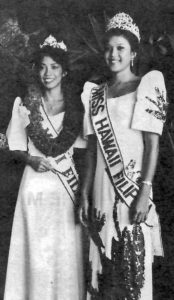
Macadangdang, who was born and raised on Maui, grew up immersed in her Filipino culture and Maui’s Filipino community. “With the Good Shepherd Church Filipino Youth Choir, I was fortunate to be exposed to and able to learn more about my rich Filipino heritage from an early age of seven. The Maui Filipino Community Council also gave me the opportunity to serve as a youth representative on the Council when I was in high school. Through these unique experiences during my formative years, I developed a deep respect for Filipino folk dance, song and music all through the kindness, love and support of Father Justo and Manang Nancy Andres, and Nana Aggie Cabebe. This also fostered in me a deep sense of pride and belonging to the Filipino community,” said Macadangdang whose parents emigrated from the Philippines to work on the plantations during the Sakada era. “So when the time came that I became eligible to enter (at age 18), it seemed like a natural next step, a wonderful opportunity to reciprocate—a way to give back to those that had done so much for me—my parents, Father Andres & Manang Nancy, Nana Aggie and so many others that supported me growing up and a way to help raise funds for the Filipino community to perpetuate our cultural heritage.”

But agreeing to be a participant was just the beginning. “Now, when I saw the competition though, that was another story. I felt I didn’t have what it takes to compete. The other girls were beautiful, a little older and more seasoned. They were skinny and were better educated. I on the other hand was just finishing high school!” recalls Zalsos. “But to my lucky stars, the committee was a dream team. They worked hard to prepare each of us contestants for the big competition. They were strict, informative, passionate. They were all determined to equip each contestant with the necessary tools for a successful performance. Basically, they leveled the playing field as best as they could. The rest was up to each individual contestant. In the spirit of competition, I felt the need to seek out further guidance and coaching—a quality I kept after that pageant. I sought the help of a coach, who could help tweak my talent, interview and poise. When I finally found them (three fairy godmothers), they had two weeks to work with me before the competition. One in particular stood out and took on the task to help me—Ms. Vanessa Medeiros. It was as if the heavens opened and she was sent just for me. Of course, having been the coach of other winning Miss Maui Filipinas and a Miss Hawai‘i Filipina helped boost my confidence that I was in very good hands. She spoke and I listened. The rest is history. Much to my pleasant surprise, I was blessed to win.”

Bolosan spoke of how the Miss Maui Filipina Pageant is one of the longest-running pageants in the State of Hawai‘i. “More than just a beauty pageant, the Miss Maui Filipina Pageant provides the opportunity for young Filipinas to obtain scholarships to further their college education, learn more about their Filipino heritage and culture, build self-confidence, connect and gain a network of mentors, friendships, and contacts to access and depend on for assistance. It also provides a platform to allow the participants to utilize their gifts and talents to give back and serve their community. I am grateful for the Miss Maui Filipina Pageant organization for continuing to invest in our young Filipinas allowing them to succeed in their desired ambitions and aspirations.” For Amadeo, it was a cultural awakening experience: “The Miss Maui Filipina pageant for me was a stepping stone that led me toward a cultural heritage identity. The pageant should continue to be stepping stones for every young Filipino woman who is trying to figure this life out and to help them make right choices in their life not only for themselves but for their family and community. The pageant process alone teaches self-confidence, patience, responsibility, respect, trust and humility. Those are not characteristics that can be learned from a book.”
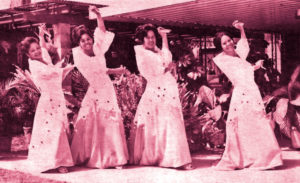
Rowena Dagdag affirmed the important role of Filipino culture in the pageant: “My mother was Miss Maui Filipina 1968, so participation in the pageant is somewhat a tradition in my family. The pageant format has changed over the years but what sets the Miss Maui Filipina pageant apart from other pageants is the Filipino culture. Michelle Santos has been such an amazing pageant coordinator over the years, making sure that the Miss Filipina traditions of the past are continued and that the opening number, entertainment, discussion topics are all based on our culture. The pageant provides young Filipino women an opportunity to learn more about their family relationships, Filipino culture (traditions, art, geography, celebrations, history, values), and to refine their skills. I can’t think of any other experience on Maui that provides all of that.”

In our multiethnic society, perpetuating our Filipino culture is important and the Miss Maui Filipina pageant is one such vehicle, according to Macadangdang. “It’s important because it engages the community and provides an opportunity to perpetuate our culture for the benefit of our future generations. It enables our youth to learn more about their Filipino heritage, to strengthen their ties to their culture and foster pride in our ethnicity. I experienced this first-hand with my daughter, Celina Macadangdang Hayashi. I left the decision to run entirely up to her. With her grandmother’s (Remigia Macadangdang) encouragement and support, she decided to run when she turned eighteen. As a third generation Filipina, I saw her love, respect, appreciation and pride for her Filipino heritage expand and grow tremendously through this experience. Her sense of self became more deeply rooted and her life purpose more clear. The pageant experience transformed her positively in building character and confidence. I believe it helped her in her personal endeavors as evidenced by her graduation from medical school this year and becoming a medical doctor.”
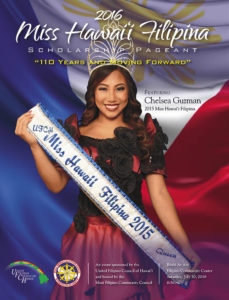
(There are three sets of mother-daughter Miss Maui Filipinas: Judith Dagdag (1968) and Rowena Dagdag (2000); Jeanette Tapat (1972) and Elaine Paiva (1994); and Agnes Macadangdang (1978) and Celina Hayashi (2009).) Bolosan reminded the three contestants they were already winners: “No matter whether or not you garner the title of Miss Maui Filipina, you are already a winner. Through the pageant process, you will learn more about yourself, grow stronger as an individual, doors will be opened to you to be an integral contributor to your community and in your future career. Be bold, be fearless, be yourself—you should be proud of who you are, your accomplishments, and continue to shoot for your dreams—for anything is possible.”
Indeed, Be Empowered!
Alfredo G. Evangelista is a graduate of Maui High School, the University of Southern California, and the University of California at Los Angeles School of Law. He has been practicing law for 35 years (since 1983). Aside from having a cousin win the Miss Maui Filipina contest (Wynne Evangelista in 1991), his only participation in the Miss Maui Filipina pageant was as an entertainer (he played Angklung with the Good Shepherd Church Filipino Youth Choir during the 1973 Miss Maui Filipina pageant, danced A La Jota and was a bamboo pounder for Singkil as a member of the Good Shepherd Church Filipino Youth Choir and Dance Troupe during the 1976 Miss Maui Filipina pageant).
